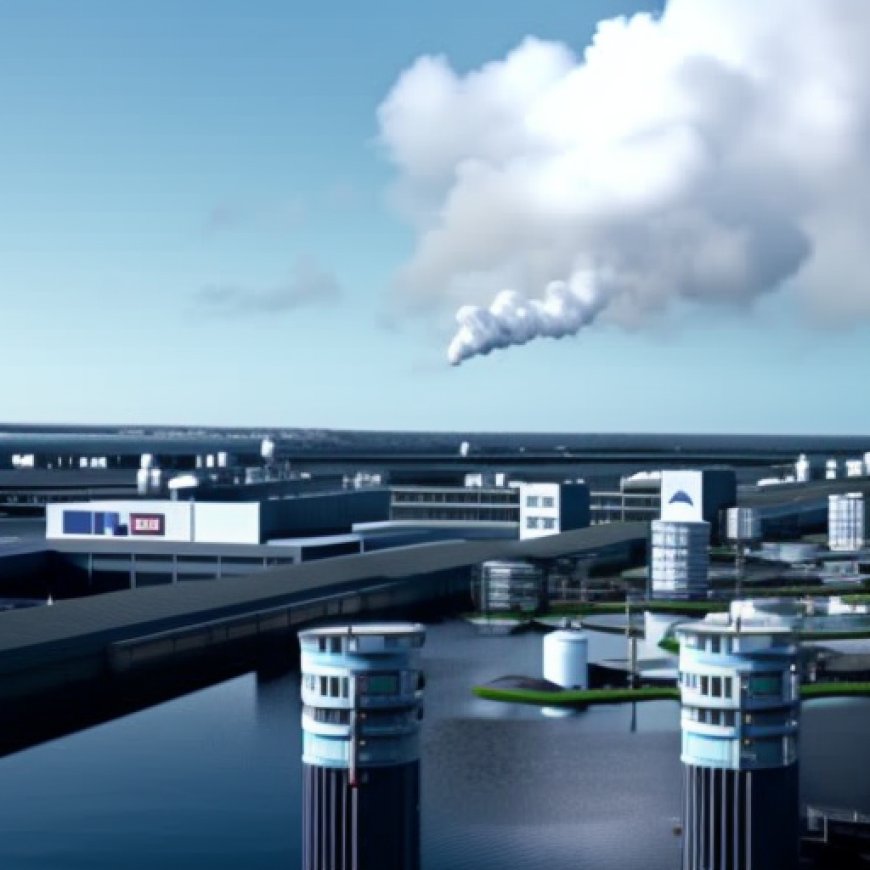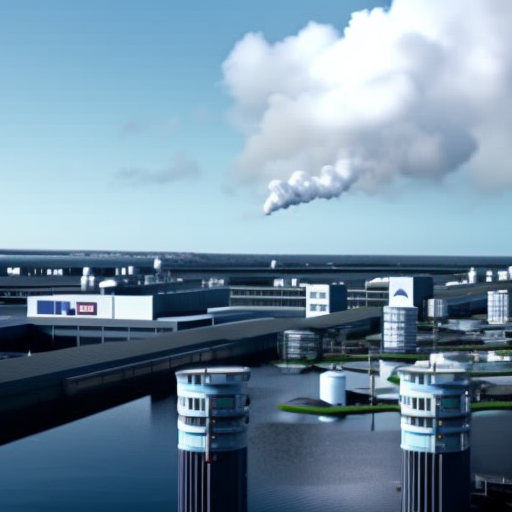Fukushima plant water release within weeks raises worries about setbacks to businesses, livelihoods
Fukushima plant water release within weeks raises worries about setbacks to businesses, livelihoods ABC News


IWAKI, Japan — Beach Season in Japan Threatened by Fukushima’s Water Release Plan

IWAKI, Japan — Beach season has started across Japan, which means seafood for holiday makers and good times for business owners. But in Fukushima, that may end soon.
Concerns over Radioactive Wastewater Release
Within weeks, the tsunami-hit Fukushima Daiichi nuclear power plant is expected to start releasing treated radioactive wastewater into the sea, a highly contested plan still facing fierce protests in and outside Japan.
The residents worry that the water discharge 12 years after the nuclear disaster could deal another setback to Fukushima’s image and hurt their businesses and livelihoods.
“Without a healthy ocean, I cannot make a living.” said Yukinaga Suzuki, a 70-year-old innkeeper at Usuiso beach in Iwaki about 50 kilometers (30 miles) south of the plant. And the government has yet to announce when the water release will begin.
It’s not yet clear whether, or how, damaging the release will be. But residents say they feel “shikataganai” — meaning helpless.
Suzuki has requested officials to hold the plan at least until the swimming season ends in mid-August.
“If you ask me what I think about the water release, I’m against it. But there is nothing I can do to stop it as the government has one-sidedly crafted the plan and will release it anyway,” he said. “Releasing the water just as people are swimming at sea is totally out of line, even if there is no harm.”
The beach, he said, will be in the path of treated water traveling south on the Oyashio current from off the coast of Fukushima Daiichi.
Managing Contaminated Water
The government and the operator, Tokyo Electric Power Company Holdings, or TEPCO, have struggled to manage the massive amount of contaminated water accumulating since the 2011 nuclear disaster, and announced plans to release it to the ocean during the summer.
They say the plan is to treat the water, dilute it with more than a hundred times the seawater and then release it into the Pacific Ocean through an undersea tunnel. Doing so, they said, is safer than national and international standards require.
Suzuki is among those who are not fully convinced by the government’s awareness campaign that critics say only highlights safety. “We don’t know if it’s safe yet,” Suzuki said. “We just can’t tell until much later.”
Impact on Local Businesses and Fisheries
The Usuiso area used to have more than a dozen family-run inns before the disaster. Now, Suzuki’s half-century old Suzukame, which he inherited from his parents 30 years ago, is the only one still in business after surviving the tsunami. He heads a safety committee for the area and operates its only beach house.
Suzuki says his inn guests won’t mention the water issue if they cancel their reservations and he would only have to guess. “I serve fresh local fish to my guests, and the beach house is for visitors to rest and chill out. The ocean is the source of my livelihood.”
Fukushima’s badly hit fisheries community, tourism and the economy are still recovering. The government has allocated 80 billion yen ($573 million) to support still-feeble fisheries and seafood processing and combat potential reputation damage from the water release.
International Concerns and Scientific Analysis
Japanese fishing organizations strongly opposed Fukushima’s water release, as they worry about further damage to the reputation of their seafood as they struggle to recover. Groups in South Korea and China have also raised concerns, turning it into a political and diplomatic issue. Hong Kong has vowed to ban the import of aquatic products from Fukushima and other Japanese prefectures if Tokyo discharges treated radioactive wastewater into the sea.
China plans to step up import restrictions and Hong Kong restaurants began switching menus to exclude Japanese seafood. Agricultural Minister Tetsuro Nomura acknowledged some fishery exports from Japan have been suspended at Chinese customs, and that Japan was urging Beijing to honor science.
Japan sought support from the International Atomic Energy Agency for transparency and credibility. IAEA’s final report, released this month and handed directly to Prime Minister Fumio Kishida, concluded that the method meets international standards and its environmental and health impacts would be negligible. IAEA Director General Rafael Grossi said radioactivity in the water would be almost undetectable and there is no cross-border impact.
Scientists generally agree that environmental impact from the treated water would be negligible, but some call
SDGs, Targets, and Indicators Analysis
1. Which SDGs are addressed or connected to the issues highlighted in the article?
- SDG 14: Life Below Water – The article discusses the potential release of treated radioactive wastewater into the sea, which could have implications for marine life and the health of the ocean.
- SDG 8: Decent Work and Economic Growth – The article highlights the concerns of local business owners and residents about the potential impact of the water release on their livelihoods and businesses.
- SDG 3: Good Health and Well-being – The article mentions the concerns of residents about the safety of the water release and its potential impact on their health.
2. What specific targets under those SDGs can be identified based on the article’s content?
- SDG 14.1: By 2025, prevent and significantly reduce marine pollution of all kinds – The potential release of treated radioactive wastewater into the sea raises concerns about marine pollution and its impact on marine life.
- SDG 8.9: By 2030, devise and implement policies to promote sustainable tourism that creates jobs and promotes local culture and products – The concerns raised by local business owners about the potential impact on their businesses and livelihoods highlight the need for policies that support sustainable tourism.
- SDG 3.9: By 2030, substantially reduce the number of deaths and illnesses from hazardous chemicals and air, water, and soil pollution and contamination – The concerns about the safety of the water release and its potential impact on health relate to this target.
3. Are there any indicators mentioned or implied in the article that can be used to measure progress towards the identified targets?
- Indicator for SDG 14.1: Percentage of marine pollution incidents related to radioactive substances – This indicator could be used to measure the impact of the water release on marine pollution.
- Indicator for SDG 8.9: Number of local businesses affected by the water release and their ability to recover – This indicator could assess the impact on local businesses and their recovery.
- Indicator for SDG 3.9: Number of reported illnesses or health issues related to exposure to radioactive substances from the water release – This indicator could measure the health impact of the water release.
SDGs, Targets, and Indicators Table
| SDGs | Targets | Indicators |
|---|---|---|
| SDG 14: Life Below Water | Target 14.1: By 2025, prevent and significantly reduce marine pollution of all kinds | Indicator: Percentage of marine pollution incidents related to radioactive substances |
| SDG 8: Decent Work and Economic Growth | Target 8.9: By 2030, devise and implement policies to promote sustainable tourism that creates jobs and promotes local culture and products | Indicator: Number of local businesses affected by the water release and their ability to recover |
| SDG 3: Good Health and Well-being | Target 3.9: By 2030, substantially reduce the number of deaths and illnesses from hazardous chemicals and air, water, and soil pollution and contamination | Indicator: Number of reported illnesses or health issues related to exposure to radioactive substances from the water release |
Behold! This splendid article springs forth from the wellspring of knowledge, shaped by a wondrous proprietary AI technology that delved into a vast ocean of data, illuminating the path towards the Sustainable Development Goals. Remember that all rights are reserved by SDG Investors LLC, empowering us to champion progress together.
Source: abcnews.go.com

Join us, as fellow seekers of change, on a transformative journey at https://sdgtalks.ai/welcome, where you can become a member and actively contribute to shaping a brighter future.







